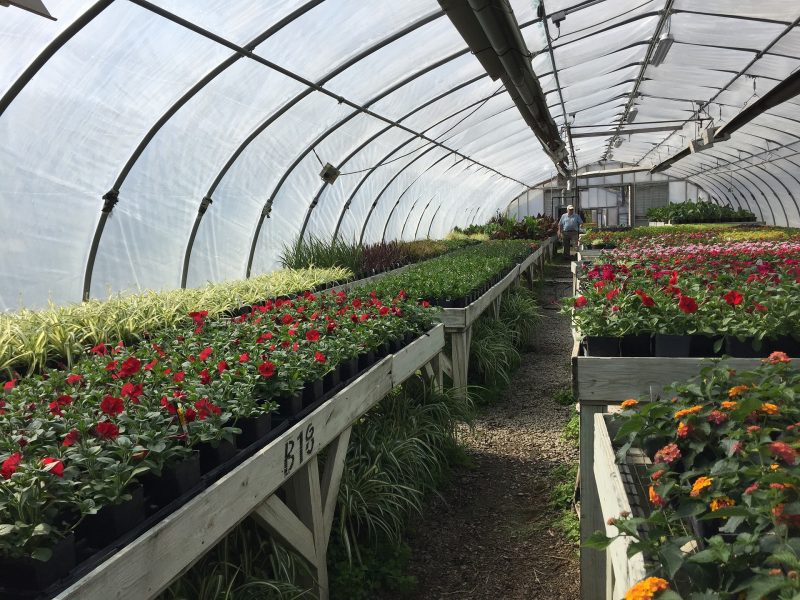Learning how to use a greenhouse in Georgia involves the type and size of greenhouse, location, and maintenance. There will be additional points to consider when you opt to use a greenhouse in the peach state, similar to how you’d expect in any other state. However, you don’t have to fret because learning about the three sections mentioned should prepare you for this venture.
Did you know that greenhouses make up half of Georgia’s ornamental horticulture industry? And not only that, but they are the seventh commodity valuing 444 million dollars. Learning the proper usage of this valuable structure will allow you to take part in its advantage of year-round cultivation of crops.

How To Use Greenhouse In Georgia: 3 Considerations
There are many kinds of greenhouses that you can use in Georgia. And to use one ideally in this state, you must study their types and sizes, your location, and how to maintain one properly.
Type and size
The first consideration of using a greenhouse in Georgia is its type and size. The University of Georgia Extension classified greenhouses into freestanding and attached. With the latter, you have the option between an even-span, lean-to, or a window-mounted greenhouse.
Freestanding vs. attached
If you have a freestanding greenhouse in Georgia, then you have the advantage of customizing it to your desired location, shape, and size. However, you will need a heating system for this greenhouse. Similarly, an even-span greenhouse offers the same flexibility.
If you’re using a lean-to greenhouse in Georgia, you have the advantage of lower costs in electricity because of its design. You can also use a window-mounted greenhouse if you’re only growing a few plants. Speaking of a few plants, what you’re growing also dictates the greenhouse’s size to get.
You want your greenhouse to be comfortable, convenient, and efficient to use, including proper size. Allow room for your walkway, shelves, and compute the sizing requirements of your crops. Professionals even recommend increasing the size you have by up to 50% if you want to expand later.
Location
The next way to know how to use a greenhouse in Georgia properly is knowing your location. Your location plays a significant role in the practices you’ll do indoors, and one of the reasons is your hardiness zone. Georgia is USDA-rated 6 to 9, so your temperatures can reach from -5 to 25°F.
Keeping the specific expectations for your area, you can modify the practices you’ll do inside the greenhouse. This article will discuss the greenhouse maintenance for Georgia later on. Going back to the importance of location, your management practices will only be effective if your greenhouse’s location is ideal.
Keep in mind the sunlight’s direction and intensity for this area and how safe it will be against a storm. Ideally, put your greenhouse in a sunny location such as the south or east side of a house and avoid the northern site. This will allow your greenhouse in Georgia to use natural heat and support your plants’ photosynthesis for growth.
Maintenance
Now that you’ve learned about types and sizes of greenhouse and the ideal location, the next consideration to have a successful greenhouse in Georgia is proper maintenance. Gardeners can always simplify the maintenance of greenhouse into regular check-up of conditions and cleaning and sanitation. The tips below are for general supervision of the greenhouse, but keep in mind that modifications are necessary depending on your plants and location.
Temperature, air circulation, and humidity
For starters, one of the most crucial parts of usage in the greenhouse is keeping the optimal indoor conditions for the plants. Generally, plants will thrive at 55 to 65°F in the greenhouse. Some plants are more sensitive to temperatures, while others are hardy even in harsh conditions.
Monitor your greenhouse in Georgia, especially if you experience freezing temperatures at night. The same goes for the summer heat, where adding a cooling system and shade might be necessary for some plants. But besides temperature, ventilation and humidity are also influential aspects to the success of your greenhouse.
Maintaining air circulation and the ideal humidity indoors will protect plants from diseases such as molds and pests. You can also use automated systems if you think this will be more convenient for your greenhouse. And lastly, regular cleaning and sanitation should be a mandatory practice, regardless of your greenhouse location.
Cleaning and sanitation
These include being diligent in the plants and materials you bring inside to prevent the transmission of fungal diseases, pests, and weeds. You should also regularly sanitize every surface and avoid letting debris, cuttings, spilled soil to stand in the greenhouse.
Conclusion
The peach state makes a good location for indoor gardening. However, there are three considerations to learn how to use a greenhouse in Georgia successfully. These considerations are the type and size of the greenhouse, your location, and maintenance.
The management of the greenhouse can be general, but these three considerations will modify them. Georgia itself has hardiness zones rated 6 to 9, so you have to identify your location’s rating and adjust accordingly. Overall, using a greenhouse in Georgia is no different from how you’ll use a greenhouse in other states, with the practices changing depending on your specific area and plants.
